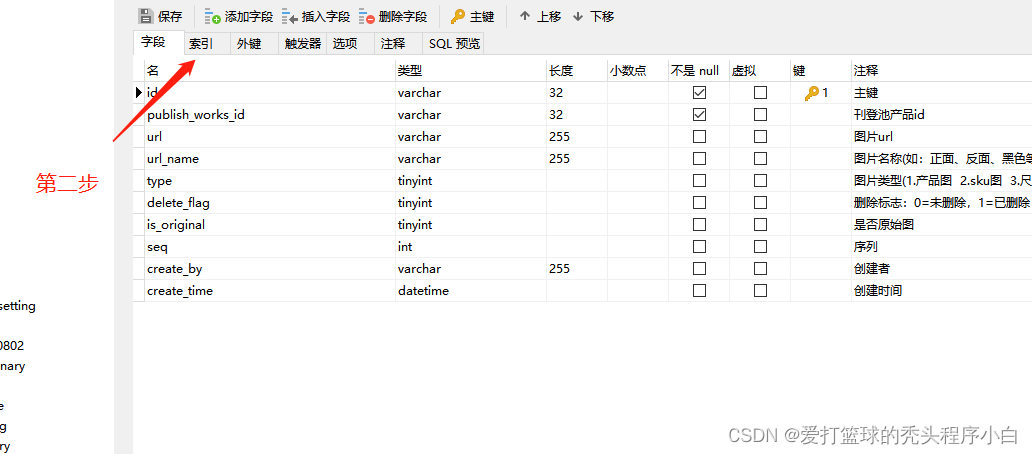【PHP数据库遍历技巧大揭秘】:掌握高效输出数据库数据的秘诀
发布时间: 2024-08-02 17:32:07 阅读量: 17 订阅数: 23 


PHP 数据库树的遍历方法

# 1. PHP数据库遍历基础**
PHP数据库遍历是获取和处理数据库查询结果的常用技术。它允许程序员逐个访问查询结果集中的行和列,从而可以对数据进行分析、修改或显示。
PHP提供了多种遍历方法,每种方法都有其独特的优点和缺点。最常用的方法是while循环和foreach循环,它们允许程序员直接访问结果集中的行和列。此外,PHP还提供了迭代器和游标遍历,它们提供了更高级的遍历功能,如延迟加载和数据流式传输。
# 2. PHP数据库遍历技巧
### 2.1 循环遍历结果集
#### 2.1.1 while 循环
while 循环是遍历结果集最简单的方法之一。它使用 `while` 语句,只要结果集中还有行,就会继续执行循环。
```php
$stmt = $pdo->query('SELECT * FROM users');
while ($row = $stmt->fetch()) {
// 处理行数据
}
```
**代码逻辑分析:**
* `$stmt->fetch()` 方法从结果集中获取下一行数据并将其存储在 `$row` 变量中。
* 如果结果集中没有更多行,`$stmt->fetch()` 将返回 `false`,导致 `while` 循环终止。
#### 2.1.2 foreach 循环
foreach 循环是遍历结果集的另一种简单方法。它使用 `foreach` 语句,它会迭代结果集中的每一行。
```php
$stmt = $pdo->query('SELECT * FROM users');
foreach ($stmt as $row) {
// 处理行数据
}
```
**代码逻辑分析:**
* `$stmt` 是一个 PDOStatement 对象,它实现了 `Iterator` 接口。
* `foreach` 循环会自动调用 `$stmt->fetch()` 方法来获取下一行数据。
* 如果结果集中没有更多行,`$stmt->fetch()` 将返回 `false`,导致 `foreach` 循环终止。
### 2.2 迭代器遍历
#### 2.2.1 PDOStatement::iterate()
`PDOStatement::iterate()` 方法允许以迭代器的方式遍历结果集。它返回一个迭代器对象,该对象可以逐行访问结果集。
```php
$stmt = $pdo->query('SELECT * FROM users');
$iterator = $stmt->iterate();
foreach ($iterator as $row) {
// 处理行数据
}
```
**代码逻辑分析:**
* `$stmt->iterate()` 方法返回一个 `PDOStatement::iterate()` 迭代器对象。
* `foreach` 循环会自动调用迭代器的 `current()` 和 `next()` 方法来获取下一行数据。
* 如果结果集中没有更多行,`$iterator->next()` 将返回 `false`,导致 `foreach` 循环终止。
#### 2.2.2 PDOStatement::fetchObject()
`PDOStatement::fetchObject()` 方法允许将结果集中的行转换为对象。它返回一个对象,该对象具有与结果集中列相对应的属性。
```php
$stmt = $pdo->query('SELECT * FROM users');
while ($user = $stmt->fetchObject()) {
// 访问用户属性,例如 $user->name 和 $user->email
}
```
**代码逻辑分析:**
* `$stmt->fetchObject()` 方法返回一个对象,该对象具有与结果集中列相对应的属性。
* `while` 循环会继续执行,直到结果集中没有更多行或 `$stmt->fetchObject()` 返回 `false`。
### 2.3 游标遍历
#### 2.3.1 PDOStatement::setFetchMode()
`PDOStatement::setFetchMode()` 方法允许设置结果集的游标模式。游标模式决定了如何从结果集中获取行。
```php
$stmt = $pdo->query('SELECT * FROM users');
$stmt->setFetchMode(PDO::FETCH_ASSOC);
while ($row = $stmt->fetch()) {
// 访问行数据,例如 $row['name'] 和 $row['email']
}
```
**代码逻辑分析:**
* `$stmt->setFetchMode(PDO::FETCH_ASSOC)` 设置游标模式为关联数组模式。
* `$stmt->fetch()` 方法返回一个关联数组,其中键是列名,值是列值。
* `while` 循环会继续执行,直到结果集中没有更多行或 `$stmt->fetch()` 返回 `false`。
#### 2.3.2 PDOStatement::fetch()
`PDOStatement::fetch()` 方法允许手动从结果集中获取行。它返回一行数据,可以是关联数组、数字索引数组或对象。
```php
$stmt = $pdo->query('SELECT * FROM users');
while ($row = $stmt->fetch(PDO::FETCH_ASSOC)) {
// 访问行数据,例如 $row['name'] 和 $row['email']
}
```
**代码逻辑分析:**
* `$stmt->fetch(PDO::FETCH_ASSOC)` 从结果集中获取下一行并将其返回为关联数组。
* `while` 循环会继续执行,直到结果集中没有更多行或 `$stmt->fetch()` 返回 `false`。
# 3. PHP数据库遍历优化
### 3.1 缓存查询结果
缓存查询结果可以有效减少数据库访问次数,从而提高遍历效率。有两种常用的缓存方法:
#### 3.1.1 使用 PDOStatement::cache_result()
PDOStatement::cache_result() 方法将查询结果缓存到客户端,后续遍历时直接从缓存中获取数据,无需再次查询数据库。
```php
$stmt = $pdo->prepare("SELECT * FROM users");
$stmt->execute();
$stmt->cache_result();
while ($row = $stmt->fetch()) {
// 遍历缓存结果
}
```
#### 3.1.2 使用 memcached 或 Redis
memcached 和 Redis 是流行的内存缓存系统,可以将查询结果缓存到内存中。使用这些缓存系统需要安装相应的扩展并进行配置。
```php
// 使用 memcached
$memcached = new Memcached();
$memcached->add('users', $stmt->fetchAll());
// 使用 Redis
$redis = new Redis();
$redis->set('users', json_encode($stmt->fetchAll()));
```
### 3.2 限制结果集大小
限制结果集大小可以减少需要遍历的数据量,从而提高遍历效率。有两种常用的方法:
#### 3.2.1 使用 PDOStatement::rowCount()
PDOStatement::rowCount() 方法返回查询结果集中的行数。可以根据行数限制遍历的范围。
```php
$stmt = $pdo->prepare("SELECT * FROM users");
$stmt->execute();
$rowCount = $stmt->rowCount();
for ($i = 0; $i < $rowCount; $i++) {
// 遍历指定行数的结果
}
```
#### 3.2.2 使用 PDOStatement::limit()
PDOStatement::limit() 方法限制查询返回的结果集大小。
```php
$stmt = $pdo->prepare("SELECT * FROM users");
$stmt->execute();
$stmt->limit(10);
while ($row = $stmt->fetch()) {
// 遍历最多 10 行结果
}
```
### 3.3 异步遍历
异步遍历可以避免阻塞主线程,从而提高遍历效率。有两种常用的异步遍历方法:
#### 3.3.1 使用 Generator
Generator 可以生成一个可迭代对象,每次调用 next() 方法返回一个结果。
```php
function fetchUsers() {
$stmt = $pdo->prepare("SELECT * FROM users");
$stmt->execute();
while ($row = $stmt->fetch()) {
yield $row;
}
}
foreach (fetchUsers() as $user) {
// 异步遍历结果
}
```
#### 3.3.2 使用协程
协程是一种轻量级的线程,可以同时执行多个任务。协程遍历可以有效利用多核 CPU。
```php
function fetchUsers() {
$stmt = $pdo->prepare("SELECT * FROM users");
$stmt->execute();
while ($row = $stmt->fetch()) {
co::yield($row);
}
}
go(function () {
foreach (fetchUsers() as $user) {
// 异步遍历结果
}
});
```
# 4. PHP数据库遍历高级应用
### 4.1 嵌套遍历
嵌套遍历是指在遍历一个结果集时,需要遍历另一个结果集。这在处理多表关联查询或树形结构数据时非常有用。
**4.1.1 多表关联查询**
多表关联查询会返回多个结果集,每个结果集对应一个表。要遍历这些结果集,可以使用嵌套循环:
```php
$stmt = $pdo->prepare("SELECT * FROM users; SELECT * FROM orders WHERE user_id = ?");
$stmt->execute([$userId]);
while ($user = $stmt->fetch(PDO::FETCH_ASSOC)) {
echo "User: " . $user['name'] . "\n";
$stmt->bindParam(1, $user['id']);
while ($order = $stmt->fetch(PDO::FETCH_ASSOC)) {
echo " Order: " . $order['product_name'] . "\n";
}
}
```
**4.1.2 树形结构遍历**
树形结构数据是指具有层次关系的数据,例如文件系统或组织结构。要遍历树形结构数据,可以使用递归算法:
```php
function traverseTree($node) {
echo $node['name'] . "\n";
foreach ($node['children'] as $child) {
traverseTree($child);
}
}
$tree = [
'name' => 'Root',
'children' => [
['name' => 'Child 1'],
['name' => 'Child 2', 'children' => [
['name' => 'Grandchild 1'],
['name' => 'Grandchild 2']
]]
]
];
traverseTree($tree);
```
### 4.2 数据转换和过滤
在遍历结果集时,可能需要转换或过滤数据。PDO 提供了以下方法:
**4.2.1 使用 PDOStatement::fetchColumn()**
`PDOStatement::fetchColumn()` 方法可以获取结果集中指定列的数据。这对于提取单个值或将结果集转换为数组非常有用:
```php
$stmt = $pdo->prepare("SELECT name FROM users");
$stmt->execute();
$names = [];
while ($name = $stmt->fetchColumn()) {
$names[] = $name;
}
```
**4.2.2 使用 PDOStatement::filter()**
`PDOStatement::filter()` 方法可以对结果集应用过滤器。这对于过滤不符合特定条件的行非常有用:
```php
$stmt = $pdo->prepare("SELECT * FROM users");
$stmt->execute();
$stmt->filter(PDO::FILTER_NULL_EMPTY_VALUES); // 过滤空值和空字符串
while ($user = $stmt->fetch(PDO::FETCH_ASSOC)) {
echo "User: " . $user['name'] . "\n";
}
```
### 4.3 自定义遍历器
在某些情况下,可能需要创建自定义遍历器来满足特定的需求。PDO 允许通过实现 `IteratorAggregate` 或 `Iterator` 接口来创建自定义遍历器:
**4.3.1 实现 IteratorAggregate 接口**
`IteratorAggregate` 接口允许对象返回一个迭代器。这对于创建可遍历的对象非常有用:
```php
class UserIterator implements IteratorAggregate {
private $users;
public function __construct(array $users) {
$this->users = $users;
}
public function getIterator(): Iterator {
return new ArrayIterator($this->users);
}
}
$users = new UserIterator([
['name' => 'John Doe'],
['name' => 'Jane Doe']
]);
foreach ($users as $user) {
echo "User: " . $user['name'] . "\n";
}
```
**4.3.2 实现 Iterator 接口**
`Iterator` 接口允许对象直接作为迭代器使用。这对于创建自定义遍历逻辑非常有用:
```php
class UserIterator implements Iterator {
private $users;
private $position = 0;
public function __construct(array $users) {
$this->users = $users;
}
public function current(): mixed {
return $this->users[$this->position];
}
public function next(): void {
$this->position++;
}
public function key(): mixed {
return $this->position;
}
public function valid(): bool {
return isset($this->users[$this->position]);
}
public function rewind(): void {
$this->position = 0;
}
}
$users = new UserIterator([
['name' => 'John Doe'],
['name' => 'Jane Doe']
]);
foreach ($users as $key => $user) {
echo "User $key: " . $user['name'] . "\n";
}
```
# 5. PHP数据库遍历最佳实践
### 5.1 选择合适的遍历方法
#### 5.1.1 根据数据量和复杂度
* **小数据量和简单查询:**while 循环或 foreach 循环
* **大数据量或复杂查询:**迭代器遍历或游标遍历
#### 5.1.2 根据性能要求
* **高性能要求:**迭代器遍历或游标遍历(设置 `PDOStatement::FETCH_ASSOC` 模式)
* **低性能要求:**while 循环或 foreach 循环
### 5.2 编写可读性高的代码
#### 5.2.1 遵循命名约定
* 使用有意义的变量和函数名称
* 遵循驼峰命名法或下划线命名法
#### 5.2.2 使用注释和文档
* 在代码中添加注释,解释目的和逻辑
* 使用文档块(如 `/**` 和 `*/`)记录函数和类的用途
### 5.3 考虑安全性
#### 5.3.1 防止 SQL 注入
* 使用 prepared statements 来防止 SQL 注入
* 对用户输入进行转义或验证
#### 5.3.2 使用 prepared statements
* prepared statements 可以提高查询性能并防止 SQL 注入
* 使用 `PDO::prepare()` 和 `PDOStatement::execute()` 来执行 prepared statements
```php
$stmt = $pdo->prepare("SELECT * FROM users WHERE username = ?");
$stmt->execute([$username]);
```
0
0






